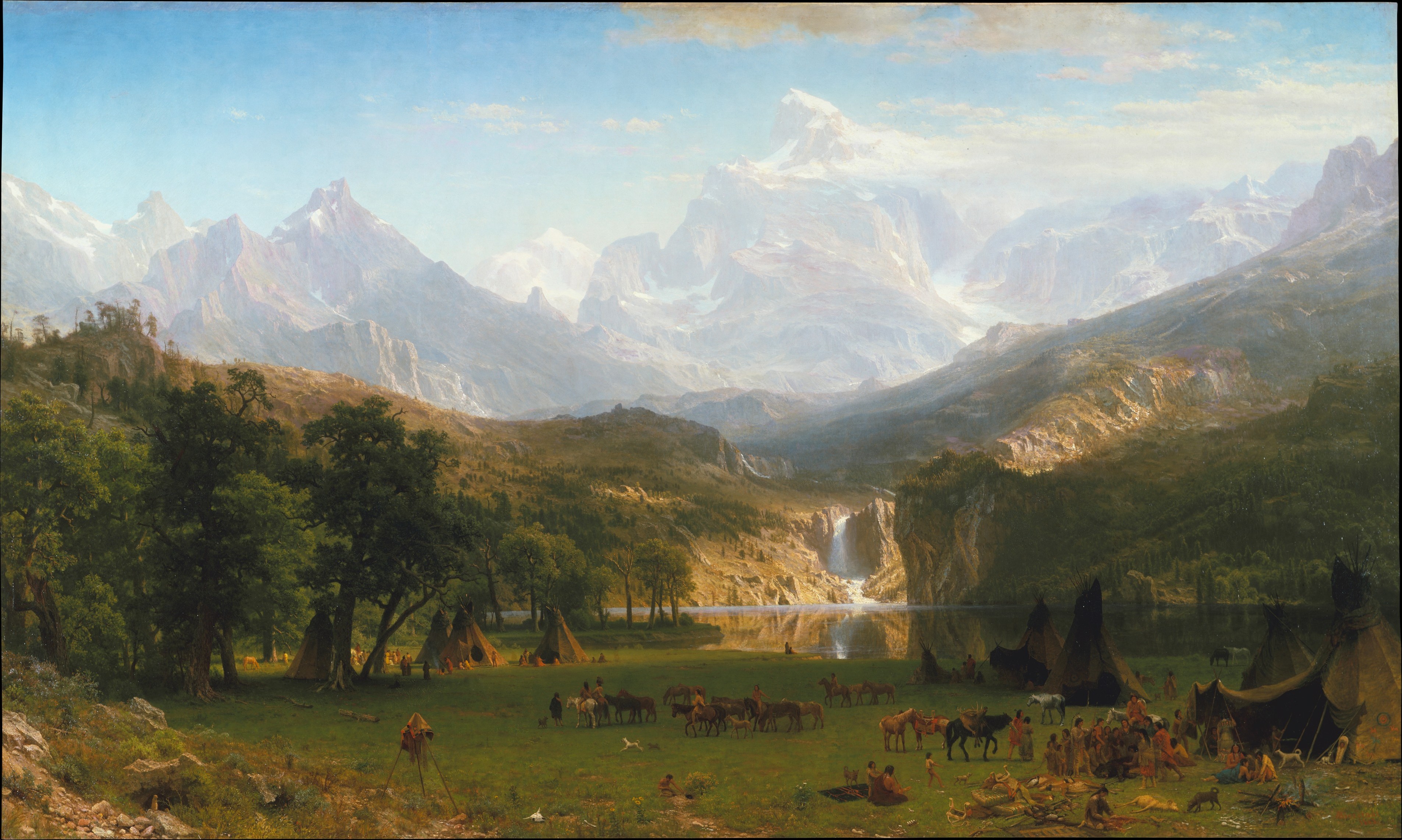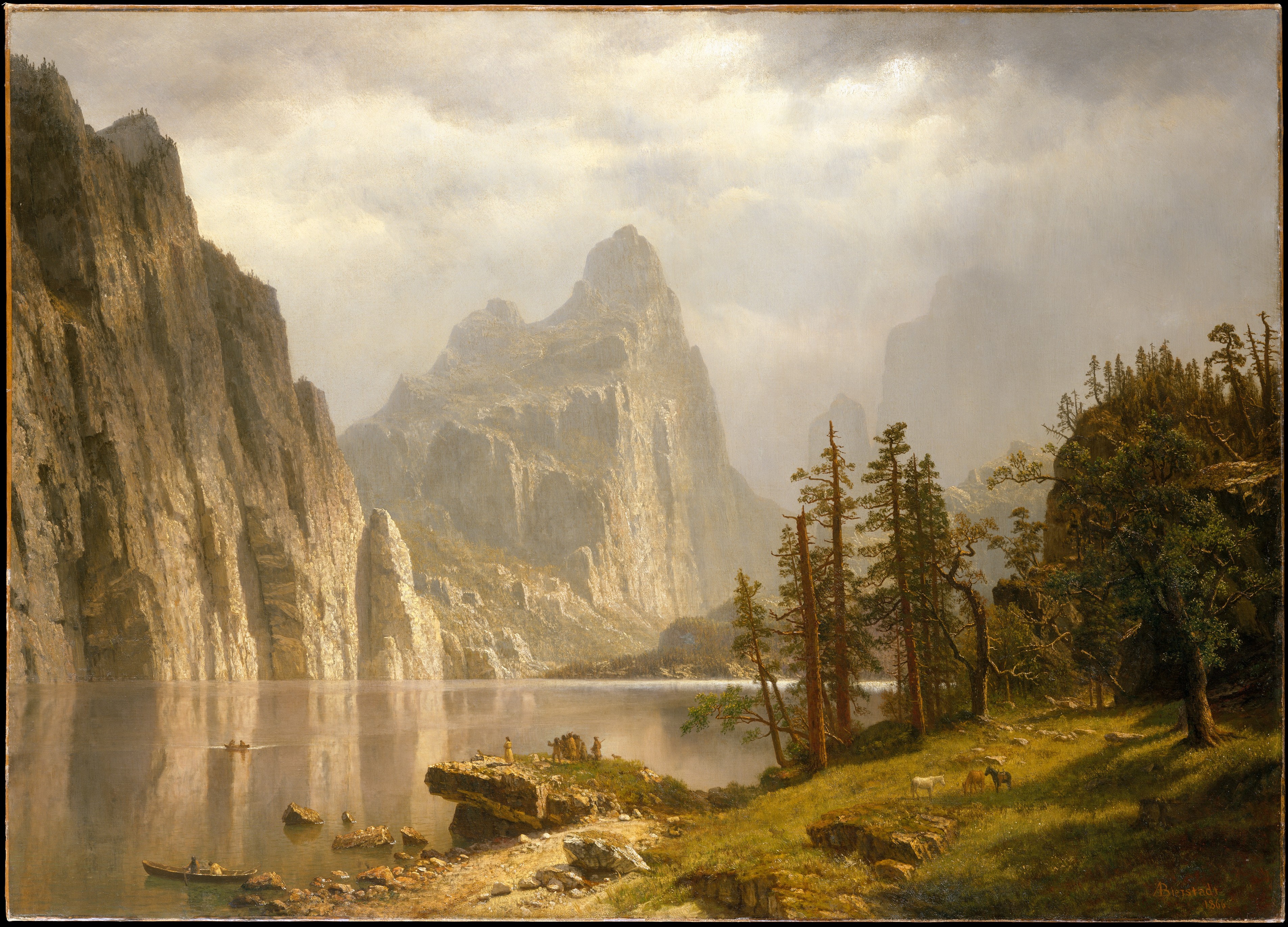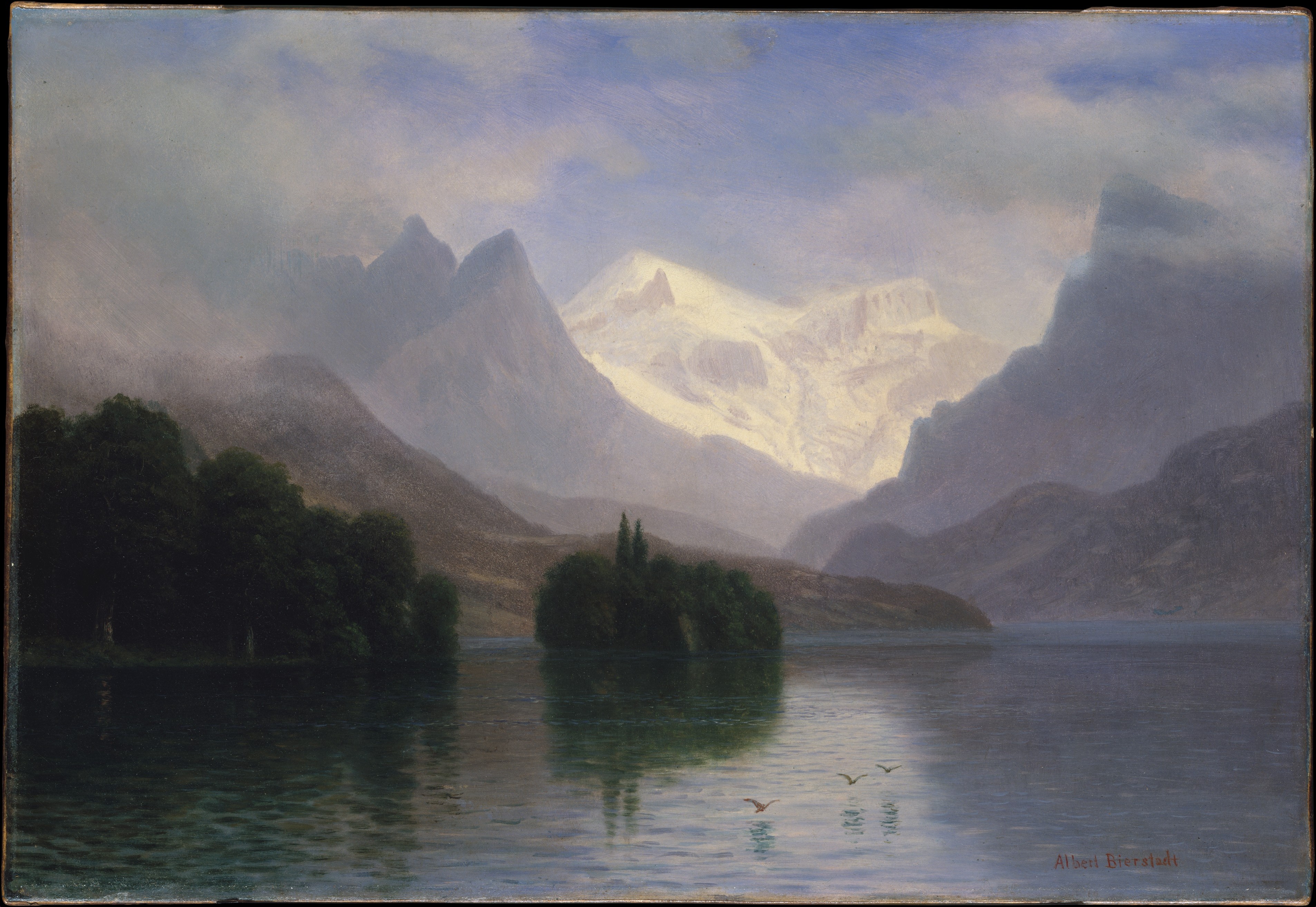During the 19th century, American landscape artists were known for their portrayals of the West. The West was a rather new and unexplored land to the Americans that began to get landscape painters attention. Before the transition west, many landscape artists that were a part of the Hudson River School, such as Thomas Cole, were known for their paintings of the vast mountains, rivers and climates in the northeast. In these paintings, they sought to capture the sublimity of the landscapes with the intent of promoting American pride and nationhood of their land. With the new movement towards western landscape painting, these themes did not cease to exist. Instead, they were interwoven with the idea of western expansionism. National pride was used to fuel the promotion of expanding westward as artists like Albert Bierstadt captured the great expanse of the Rocky Mountains and the endless, untouched terrain of the West. The sublime was still very present as painters and photographers would often have mountains taking up the majority of the canvas or photograph and many even attempted to show the utter stillness of the scene in the midst of its height and expanse. In many cases, artists would highlight the sublime through their use of light as it would shine on specific parts of the painting directing the viewers gaze helping them to see what they are seeking to present.
Albert Bierstadt, Rocky Mountain, Lander’s Peak, 1863, Oil on canvas, 07.123
Albert Bierstadt was very well known for his landscape paintings of the west, particularly the Rocky Mountains, and this work of his was one of his major accomplishments that came out of his first trip to the West. In this painting, he captures a panorama of Lander’s Peak and has it take up the upper half of the painting despite it being in the background. By doing so, he stresses the majestic mountains and the vastness of this Rocky Mountain region showing how it is fertile and inhabitable for people to live in by portraying the Native Americans. There is a beautiful waterfall being highlighted by the sunlight that empties out into a calm and peaceful basin.
The Teton Range, Thomas Moran, 1897, oil on canvas, 39.47.2
Thomas Moran
shows the splendors of the West through its many different components. Like
Bierstadt’s Rocky Mountain, Lander’s Peak,
his mountains take up the upper half of the canvas as the sunlight illuminates
them. In the foreground, he paints a full flowing stream with a vast field
between it and the mountains. The water and greenery show its fertility with
the contrast to the majesty of the mountains behind it. Portraying these
beautiful aspects of America seeks to give the viewer a sense of national pride
and awe.
Albert Bierstadt, Merced River, Yosemite
Valley, 1866, oil on canvas, 09.214.1
On Bierstadt’s second trip out
West, he camped out in Yosemite Valley which inspired this painting. These
vast, jagged mountains grasp the viewers’ attention as it overtakes its
surroundings. It minimizes the people that are shown in the foreground causing
it to be difficult for the viewer to even spot them. These Native Americans seem to be pointing
and admiring the mountains which could be Bierstadt’s way of emphasizes where
the attention should be directed and giving Americans pride in the beauty that
it possess. He stresses the sublime through the stillness of the lake and the
illumination of the sunlight pouring through the clouds and highlighting the
landscape.
Albert Bierstadt, Mountain Scene, 1880-90, oil on paper, 1979.490.2
Bierstadt’s Mountain Scene exhibits the sublime through the tranquility of the
scene. Beginning in the foreground, beauty is conveyed through the motionless
body of water as the birds hover over it. At the far base of the lake is some
greenery which seems to be a common aspect to western landscape paintings as it
illustrates the land’s fertility. In contrast, Bierstadt paints sharp mountains
that consume the majority of the painting. The lack of human existence expresses
how this landscape has been untouched by humanity invoking western expansion
into this region.
Sanford Robinson Gifford, A Gorge in the Mountains, 1862, oil on
canvas, 15.30.62
Sanford
Gifford’s, A Gorge in the Mountains,
displays a vast expanse landscape that protrudes far into the background of the
painting. He seems to be incorporating the use of atmospheric perspective because
the father back it goes, the hazier it becomes. This aspect along with the
sublimity of the beautiful valley, the waterfall, the foliage of the trees and
the sun’s illumination of everything, there seems to be an invitation to move
and inhabit this beautiful valley.
Albert Bierstadt, A Storm in the Rocky Mountains, Mt. Rosalie, 1866,
oil on canvas, Brooklyn Museum, 76.79
Bierstadt’s, A storm in the Rocky Mountains, displays both beauty and power.
Beauty is shown through both the contrast of mountains and valley and also the
climate. The sharpness of the mountains terrain is contrasted with the flat
valley and water basin while the dark storm clouds are contrasted with the blue
sky and sunlight. Power is shown through the bulkiness of the mountains and the
thick, dark storm clouds that are rolling in over the mountains covering the
land in darkness. This power and beauty shown here should invoke national pride
in of Americans in their land and cause American’s to want to expand to such
places.





Do you have any sources for this? Makes sense!
ReplyDelete